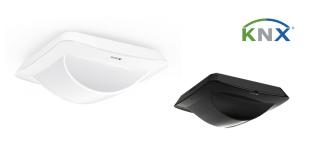Demand for device interconnectivity and common standards for data security, spur cutting-edge innovation in IoT for smart buildings, finds Frost & Sullivan
The Internet of Things (IoT) offers smart building participants a game-changing opportunity to provide integrated solutions that maximize operational and energy efficiency, enhance innovation, develop remote services and create valuable insights for end users. IoT is on the verge of breaking new ground as market participants turn the spotlight on flexible, secured and cost-effective cloud-based applications that will convert building data into a decision-making platform.
Analysis from Frost & Sullivan, Opportunities for Internet of Things (IoT) in Smart Buildings, finds that rapid urbanization, global connectivity and digital convergence of next-generation IT solutions will open up growth opportunities for IoT and cloud-based solutions in smart buildings. IoT will bridge the gap between information and operational technology in building automation systems.
“Interconnected devices from various departments in a building generate huge amounts of data that must be processed and analyzed,” said Frost & Sullivan Energy and Environmental Research Analyst Anirudh Bhaskaran. “This demand for enhanced analytics support plays a pivotal role in driving the adoption of IoT in smart buildings.”
The lack of low-power, low-data rate connectivity devices, common standards for data security and a clear perspective on concrete business opportunities are major challenges that market participants must overcome through new technologies and business models.
Some building technology (BT) providers such as Siemens, Honeywell and Schneider Electric are opting for partnerships and joint alliances with consortiums like Open Interconnect Consortium (OIC) and communication leaders like Cisco to design suitable analytic platforms.
“Establishing partnerships and alliances with consortiums and IoT providers will enhance the opportunity to bring in innovation to IoT-enabled devices and software frameworks,” added Bhaskaran. “Collaboration between large BT and IoT providers will also be the key to developing cloud-based analytics and drawing out the full potential of IoT.”
Opportunities for Internet of Things (IoT) in Smart Buildings is part of the Building Management Technologies Growth Partnership Service program. Frost & Sullivan’s related studies include: The Role of ICT in Building Smart Cities – Infrastructure, Global Emergency Lighting Market, Global Fire and Safety Market, and European Integrated Facility Management (IFM) Market. All studies included in subscriptions provide detailed market opportunities and industry trends evaluated following extensive interviews with market participants.












